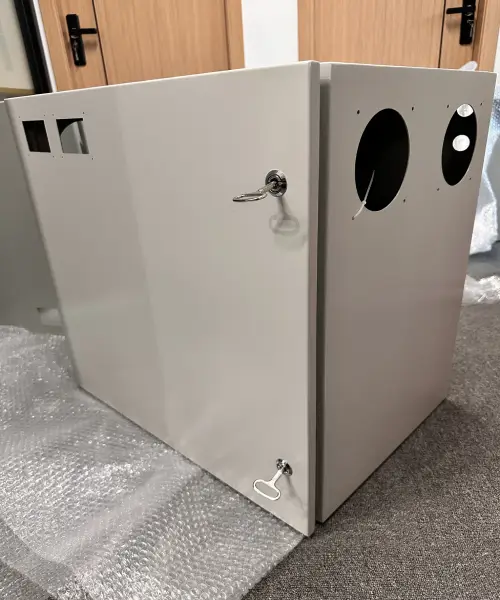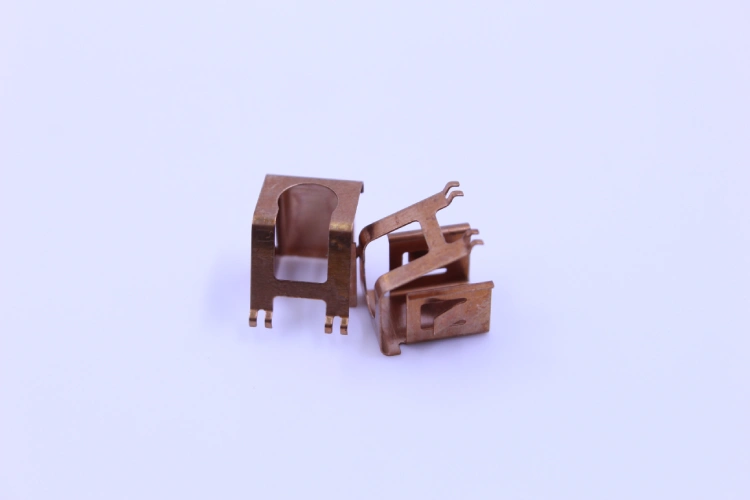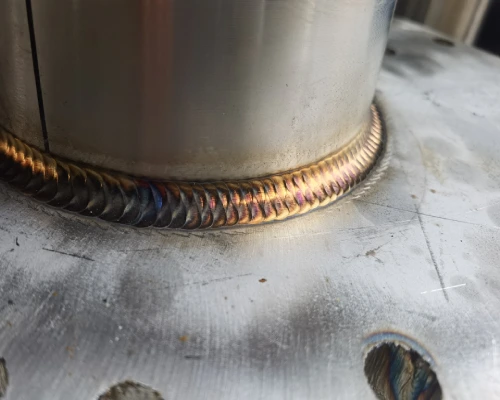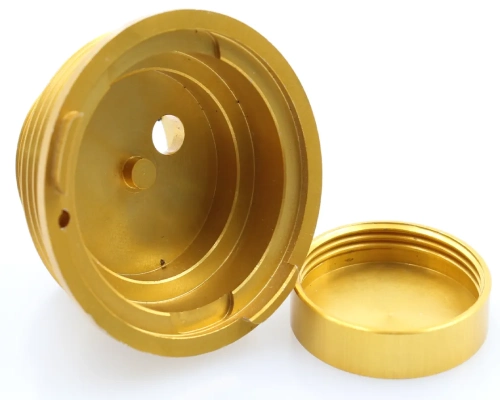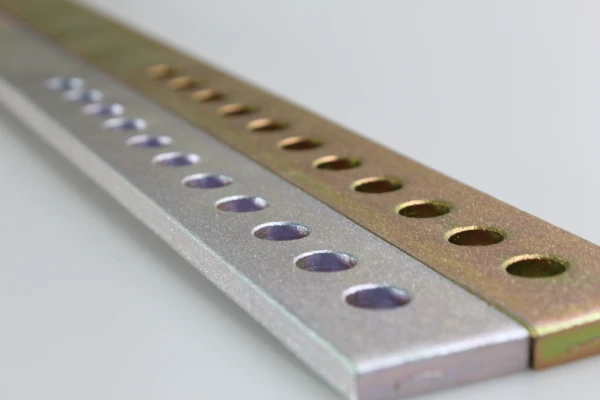Anodizing is a surface treatment technology that generates a dense, stable aluminum oxide film on aluminum surfaces through an electrolytic process, significantly enhancing the material’s corrosion resistance, wear resistance, and decorative properties.
Among these, Type II Anodized Aluminum and Hard Anodized Aluminum are the two most commonly applied anodizing methods. While sharing the same underlying principle, they exhibit significant differences in performance and application scenarios.
This article analyzes anodizing aluminum, covering its core principles, key differences between Type II Anodized Aluminum and Hard Anodized Aluminum, and how to select the appropriate process type. It aims to provide a comprehensive understanding to help you choose the correct anodizing aluminum process.
Principle of Anodizing Aluminum
Anodizing aluminum is a surface treatment technology that uses electrochemical methods to form a dense, porous aluminum oxide film on the surface of aluminum or aluminum alloys. This oxide layer is transformed from the aluminum substrate itself through chemical reactions, exhibiting extremely strong adhesion to the substrate and resisting peeling.
Basic Process of Anodizing Aluminum
Step 1: Preparation in Electrolyte
Pre-cleaned aluminum parts are suspended as the anode in a suitable electrolyte (typically acidic solutions like sulfuric acid, chromic acid, or oxalic acid). A cathode, usually made of inert materials such as lead, stainless steel, or carbon, is also placed in the electrolyte.
Step 2: Electrochemical Reactions Upon Power Application
When direct current is applied, the following reactions occur:
Anode: Aluminum atoms lose electrons and are oxidized into aluminum ions (Al³⁺). Simultaneously, water molecules undergo electrolysis, releasing oxygen ions (O²⁻).
Aluminum ions combine with oxygen ions: These newly formed, highly reactive oxygen ions immediately react with aluminum ions on the substrate surface, forming a hard layer of aluminum oxide (Al₂O₃).
Step 3: Post-Treatment—Sealing
The freshly anodized surface is porous, which facilitates dye adsorption for coloring but also makes it susceptible to contaminant and corrosive medium adsorption. Therefore, anodized aluminum requires a sealing step. Methods such as hot water, steam, or specialized sealing agents induce hydration reactions in the aluminum oxide film, causing it to expand or block the pores, thereby sealing these micro-pores. This significantly enhances the oxide film's corrosion resistance, wear resistance, and contamination resistance.
Rapid Prototype Turnaround
Committed to exceeding expectations for quality and rapid turnaround, and meeting high-quality sheet metal parts.
On-Demand Sheet Metal
Whether it is rapid prototyping & large-volume manufacturing, we will implement it according to customer needs and standards.
Real Fabricators Price
Integrate product design, bending, stamping, cutting, surface treatment, etc. to provide a series of manufacturing solutions.
Comparison of Type II Anodized Aluminum and Hard Anodized Aluminum
Anodizing Aluminum Types | Type II Anodized Aluminum | Hard Anodized Aluminum |
Anodic Oxide Layer Thickness | 5-25μm | 25-250um |
Anodic Oxide Layer Hardness | 200-400HV | ≥300HV |
Key Advantages | Excellent corrosion resistance and wear resistance, outstanding decorative properties, and relatively low cost. | Excellent wear and scratch resistance, high hardness, outstanding corrosion resistance, and good electrical insulation properties. |
Limitations | Hardness and wear resistance are inferior to hard anodized aluminum. | Anodized aluminum colors offer limited choices, incur higher costs, and may cause dimensional variations in parts. |
Appearance | Surface is transparent and uniform, with multiple anodized aluminum colors available. | The surface may exhibit a slight grayish tint. Due to its extremely thick and dense coating, only dark colors can be applied. |
Applications | Consumer electronics casings, architectural aluminum materials, automotive trim components, home appliances | Military equipment, aerospace components, hydraulic system parts, industrial robot guide rails, tooling fixtures for high-wear environments |
Anodized Aluminum Processes
Type II Anodized Aluminum: Typically performed in sulfuric acid electrolyte at room temperature or slightly above (approximately 18-22°C). The process is relatively mild, producing a thin oxide film generally between 5-25 microns.
Hard Anodized Aluminum: Typically performed in low-temperature (approximately 0-10°C or even lower) sulfuric acid or mixed acid electrolytes using higher current densities. The low temperature inhibits the electrolyte’s chemical dissolution of the oxide film, resulting in a denser, thicker structure with lower porosity. The oxide film thickness generally ranges from 25-250 microns, with a hardness ≥300 HV.
Hard Anodized Aluminum: Typically performed in low-temperature (approximately 0-10°C or even lower) sulfuric acid or mixed acid electrolytes using higher current densities. The low temperature inhibits the electrolyte’s chemical dissolution of the oxide film, resulting in a denser, thicker structure with lower porosity. The oxide film thickness generally ranges from 25-250 microns, with a hardness ≥300 HV.
Dimensional Impact
Type II Anodized Aluminum: The thinner oxide layer has minimal effect on final part dimensions, typically accommodated within design tolerances.
Hard Anodized Aluminum: The exceptionally thick oxide layer significantly increases part dimensions. Approximately half of the oxide growth penetrates into the substrate, while the other half expands outward. Therefore, machining must account for anodic oxide allowance beforehand; otherwise, dimensional errors may occur, preventing assembly. Additionally, sharp edges and corners become rounded due to oxide layer buildup.
Porosity and Transparency of Anodic Oxide Layers
Type II Anodized Aluminum: High porosity and transparent.
Hard Anodized Aluminum: Low porosity and opaque.
Cost and Lead Time
Type II Anodized Aluminum: Features a simpler process, lower energy consumption, and shorter production cycles, resulting in lower costs. It is the default choice for most commercial applications.
Hard Anodized Aluminum: Requires strict temperature control, longer processing times, and higher energy consumption, leading to higher costs compared to Type II Anodized Aluminum.
Application Scenarios
Hard Anodized Aluminum is suitable for demanding applications in military, aerospace, and similar sectors, such as sliding components, linear guides, pistons, valves, hinges, gears, insulating plates, and compressor parts. Type II Anodized Aluminum is widely used in building materials, electronics, home furnishings, and the automotive industry, with surfaces capable of being engraved with various patterns and text.
No design files? Let Supro MFG do it for you.
We often come across clients who have no professional design drawings and documentation, only a creative idea, which leads to the project being at a standstill.
If you are in this situation, then contact our team of experts.
Supro MFG, as an industry-leading custom metal fabricator, has an ever-experienced team of engineers who utilize their extensive fabrication experience and technical expertise to build your idea into a real product and create design files such as STEP/STP/SLDPRT/DXF/PDF/PRT/DWG/AI.
That’s what makes SUPRO MFG so great, and 2,000 corporate, entrepreneurial, artist, and other purchasers from around the world enjoy working with us and benefiting from our one-stop manufacturing services.
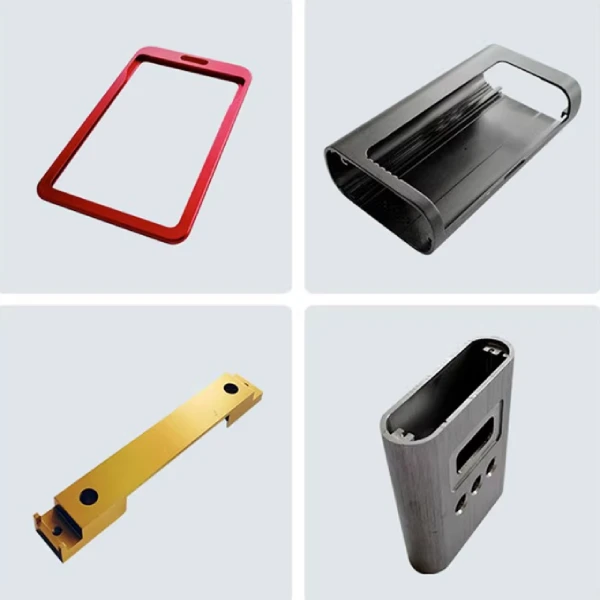
How to Select
If you are looking for anodized aluminum alloy parts Suppliers, please contact us now,
Supro MFG can provide you with professional anodized aluminum parts selection advice and enclosure one-stop service! Provide a solid fortress for your outdoor equipment, so that your project will be stable and efficient!
Functional Requirements
Select Hard Anodized Aluminum: Wear resistance is the primary objective, where components endure continuous friction, scratching, or particle abrasion (e.g., hydraulic pistons, robotic grippers, gears, guide rails) ; or where extremely high surface hardness is required to resist impact and indentation (e.g., explosion-proof equipment enclosures, heavy-duty equipment platforms); or where applications face extreme environments necessitating thicker coatings for enhanced corrosion protection (e.g., marine components, structural parts for long-term outdoor use).
Select Type II Anodized Aluminum: Primary requirements include good corrosion resistance and moderate wear resistance sufficient for daily use (e.g., electronics enclosures, door handles, kitchenware); or when serving as an excellent primer for paint or adhesives.
Aesthetics and Anodized Aluminum Colors
When product design requires vibrant, rich, or specific colors—such as corporate logo hues or product line colors—and a uniform surface with a fine texture is desired, choose Type II Anodized Aluminum.
When appearance is a secondary consideration, the component itself does not require coloring, or darker tones like black, dark gray, or bronze are acceptable, choose hard-anodized aluminum.




Geometric Dimensions and Tolerances
For thin-walled or precision components with stringent dimensional tolerances and sharp edges requiring preservation, Type II Anodized Aluminum is recommended.
If dimensional allowances for the oxide layer were incorporated during design, or if component dimensional variations fall within acceptable limits, hard-anodized aluminum may be selected.
Get An Instant Quote Now!
In summary, Type II Anodized Aluminum is primarily decorative, while Hard Anodized Aluminum is function-oriented and typically used in applications requiring wear and scratch resistance.
Supro is a professional aluminum fabrication company with extensive manufacturing experience and specialized technical expertise in anodizing aluminum, enabling rapid implementation of various precision manufacturing processes. Certified to ISO9001 and TS16949 standards, we provide expert technical guidance and comprehensive manufacturing solutions—whether you require precision engineered aluminum alloy components, aluminum enclosures, anodized aluminum sheets, or custom aluminum prototypes!




